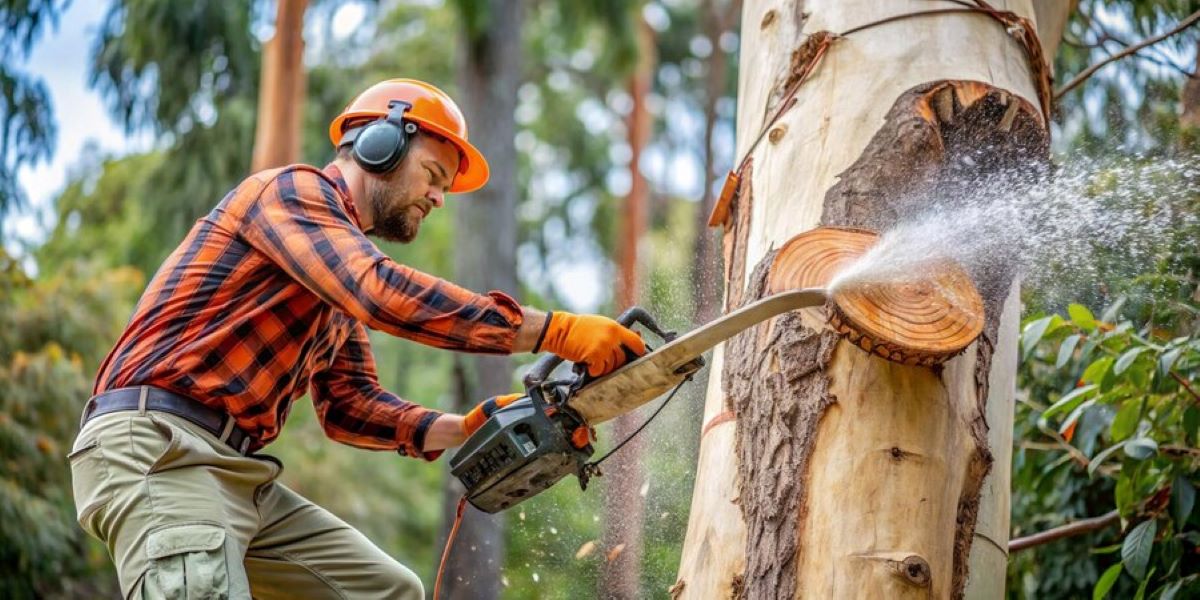What Are the Main Safety Risks That Make Tree Removal the Only Option?
When Is Structural Unsoundness a Cause for Tree Removal?
How Do Disease and Decline Justify Tree Removal?
When Does Storm Damage Make Tree Removal Necessary?
Can Location Hazards Force the Need for Tree Removal?
Understanding Tree Location Hazards
Assessing the Need for Tree Removal
Factors Influencing Removal Decisions
- Distance: Is there insufficient space for the tree’s safe growth?
- Species Characteristics: Does the tree belong to fast-growing or large-maturing varieties that may pose risks?
- Management Feasibility: Can realistic pruning cycles effectively maintain safety margins?
If these factors align unfavourably and indicate potential dangers, removal becomes the only responsible solution to prevent property damage and ensure safety.

The Escalating Threat of Underground Infrastructure
In addition to above-ground concerns, it’s crucial to consider the impact of trees on underground infrastructure such as pipelines, water mains, or sewer systems. When a tree’s root zone encroaches upon these areas, the potential for damage escalates beyond surface-level issues and poses risks of costly infrastructure failures.
Addressing Electrical Line Hazards
Another significant hazard arises from trees growing into electrical lines. This situation creates fire risks and service interruptions that can have widespread consequences. While utility companies conduct routine trimming activities to mitigate these risks, certain tree species may exhibit aggressive growth patterns or be positioned in ways that make it impossible to maintain adequate clearance. For more information on safety measures related to electricity emergencies caused by such hazards, you can refer to this resource.
By understanding these factors and their implications, property owners can make informed decisions regarding tree management strategies—whether it involves proactive measures like pruning or more drastic actions like removal—to safeguard both their properties and surrounding infrastructure.
What Role Does Environmental Stress Play in Tree Removal Decisions?
Environmental stress on trees causes gradual but irreversible damage that accumulates over time. Poor soil conditions, prolonged drought, compacted earth around roots, and exposure to pollutants or salt can weaken a tree’s ability to absorb nutrients and maintain structural integrity. These chronic stressors compromise the tree’s defence mechanisms, making it vulnerable to disease and decay. Visit https://www.environment.nsw.gov.au/topics/land-and-soil/soil-degradation to get about soil degradation.
Identifying stress signs that warrant removal includes persistent leaf discolouration despite treatment, extensive dieback in the canopy, stunted growth year after year, and bark splitting or peeling that doesn’t heal. When roots show significant damage from soil contamination or construction activity, the tree loses its anchor and nutrient supply. Trees planted in unsuitable locations—such as areas with poor drainage or extreme temperature fluctuations—often exhibit these symptoms without hope of recovery.
When Is Tree Removal the Only Safe Option? becomes the critical question when environmental factors create conditions that no amount of fertilisation, watering, or soil amendment can reverse. Removal serves as a last resort when the tree’s declining health poses safety risks that management practices cannot address.
Are There Alternatives to Tree Removal and When Are They Insufficient?
Tree pruning vs removal often presents a critical decision point for property owners facing tree health concerns. Pruning can address dead or diseased branches, improve structural integrity, and extend a tree’s lifespan when problems remain localised. Tree treatment options include targeted fungicide applications, pest management programmes, and soil amendments to address nutrient deficiencies.
These alternatives fail when damage extends beyond salvageable portions. A tree with widespread internal rot cannot be saved through pruning alone—cutting away affected branches leaves a structurally compromised trunk vulnerable to collapse. Disease that has infected the root system or vascular tissue throughout the tree renders topical treatments ineffective.
Removal becomes necessary when:
- The trunk shows extensive decay or hollow sections
- Disease has spread to more than 50% of the canopy
- Root damage threatens the tree’s anchoring ability
- Structural defects create imminent failure risk
Professional arborists assess whether intervention can genuinely restore safety or merely delays inevitable removal whilst hazards persist.
How Do Professional Tree Removal Services Ensure Safety and Efficiency?
Why should you consult qualified arborists for tree removal?
Professional arborists possess the expertise to accurately assess tree hazards and determine the safest removal approach. They identify structural weaknesses, evaluate surrounding risks, and develop customised removal strategies that protect people and property.
What techniques and equipment do professionals use?
Safe tree removal techniques include sectional dismantling, where trees are removed piece by piece from top to bottom, and controlled felling for trees in open spaces. Specialists employ:
- Cranes and aerial lifts for precise limb removal
- Rigging systems to lower heavy branches safely
- Chainsaws and specialised cutting tools
- Safety harnesses and protective gear
How do services minimise disruption?
Professional teams work systematically to contain debris within designated areas, protecting landscaping and structures. They complete thorough site cleanup, including stump grinding, wood chipping, and debris removal, leaving properties ready for immediate use without lingering hazards or mess.

Conclusion
Hazardous trees require immediate attention—delaying evaluation puts lives and property at unnecessary risk. Professional arborists have the skills to spot subtle warning signs that untrained eyes might overlook, deciding whether removal is truly the only safe option.
Don’t wait for a dangerous tree to cause damage or injury. If you’ve noticed any warning signs discussed in this article—structural weakness, disease symptoms, storm damage, or location hazards—call tree removal service professionals today. Qualified experts will assess your situation, explain your options clearly, and carry out safe removal when necessary.
Your safety depends on quick action. Contact certified arborists now for a thorough tree evaluation and protect what matters most.
Related : Tree Removal Cost: What Affects the Price and How to Get an Accurate Quote?
Quick FAQs: Tree Removal Services
Professional assessment, planning, and execution to safely remove hazardous or unsalvageable trees while minimizing property damage.
2. When is tree removal necessary?
Structurally unsound trees with internal decay or weak trunks/roots
Diseased or pest-infested trees beyond treatment
Storm-damaged trees with compromised limbs or trunks
Trees posing location hazards near buildings, utilities, or underground infrastructure
Trees under severe environmental stress (poor soil, drought, pollution)
3. Can pruning or treatment replace removal?
Only when problems are localised. Widespread decay, root failure, or structural defects require removal for safety.
4. What are the main safety risks?
Falling limbs, total tree collapse, infrastructure damage, and risk to people or vehicles.
5. How do professionals ensure safe removal?
On-site hazard assessment and structural evaluation
Sectional dismantling or controlled felling using cranes, rigging, chainsaws, and safety gear
Protection of surrounding property and landscaping
Complete debris removal and site cleanup, including stump grinding
6. Why hire certified arborists?
They identify hidden hazards, plan safe removal strategies, comply with safety regulations, and prevent property damage or injury.
7. What signs indicate immediate action?
Visible trunk cracks, hollow sections, or fungal growth
Dead or hanging branches (widow-makers)
Leaning trees or exposed roots
Extensive canopy dieback or bark damage
8. How do location hazards affect removal decisions?
Trees near buildings, power lines, or underground utilities may need removal if safe clearance or pruning is insufficient to prevent damage.



